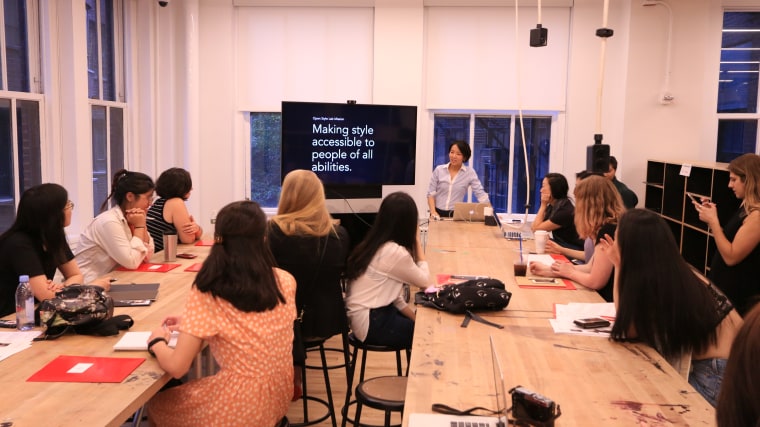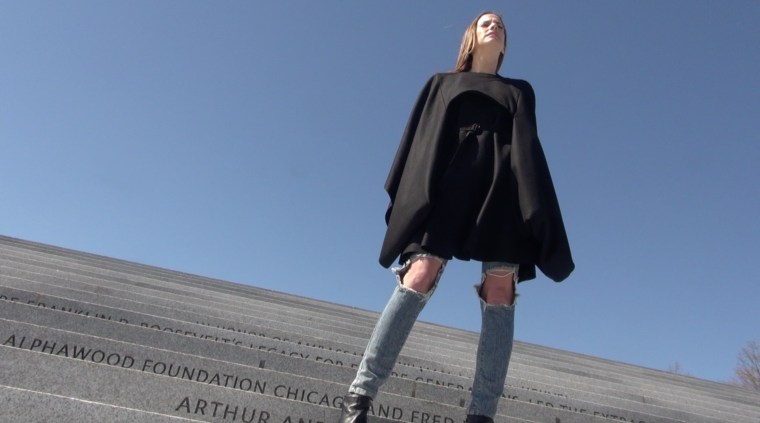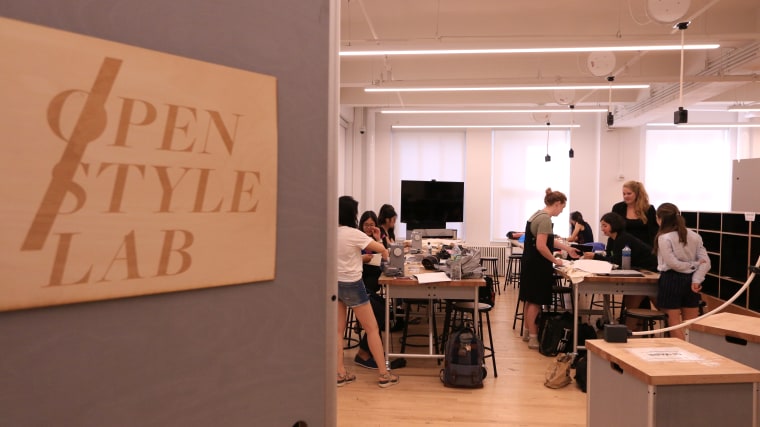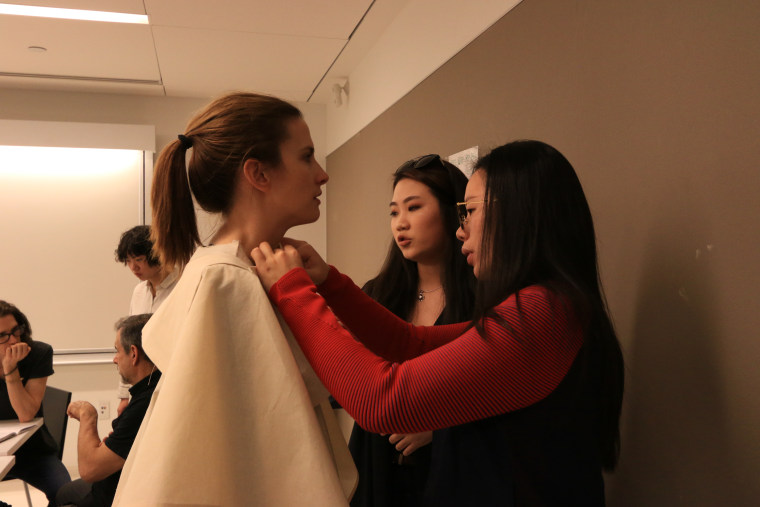Seven years ago, Christina Mallon started to experience creeping paralysis in both her arms, which she said doctors have been unable to diagnose.
Living alone in New York City, Mallon has been looking for things that could help her in her day-to-day life.
“I need tools to allow me to be independent and keep up in this fast-paced environment,” she told NBC News. “The world isn’t set up for disabled people, so everything takes me about double the time to do.”
“I think it’s interesting that there are guidelines for architecture to accommodate people with disabilities, and yet there’s no compliance legislation for clothing.”
Everything including putting on a coat, which, with the bitterly cold New York winters, Mallon needs to leave her apartment.
Mallon trawled the internet, for a fashionable coat she could put on herself, but to no avail.
“There are no real options online that aren’t for your typical grandma,” the 29-year-old said.
But earlier this year, a friend introduced her to Grace Jun, a designer, self-taught coder, and the executive director of the nonprofit Open Style Lab (OSL), whose "mission is to make clothing accessible to people with disabilities through design and technology."
“We design garments that provide people with dignity and greater independence,” Jun said.

The Brooklyn based inclusive-design organization launched in 2014, initially as a public service project at the Massachusetts Institute of Technology. In the three years since, the group has developed around 60 unique garments for people with disabilities ranging from spinal cord injuries, cerebral palsy, and Lou Gehrig’s disease as well as "invisible” disabilities like autism.
Jun said her organisation has shown that design centered around people with disabilities can be edgy, transformative, and push the boundaries for innovation in health and technology.
Twice a year Jun and the OSL team take on 15 fellows from the Parsons School of Design, Jun’s alma mater. For 10 weeks, the fellows work closely with the organization’s clients. Mallon was delighted to become one of those clients this past spring.
A mix of fashion designers, product designers, and technologists from the program arrived at her apartment.
“They looked through my closet to try and understand my aesthetic,” Mallon said. “I love chic clothing, and I love black!”

They also spent time observing how she moved and navigated her world. Jun said the process is crucial to creating a design that meets each client’s unique needs and caters to their realities.
Since Mallon couldn’t use her arms the students added boning to the coat’s neckline. The finished product was sleek, black, and just what she had always wanted.
“With the collar held open I can easily slip my head through.” Mallon said. “I cried the first time I put it on. It was actually my birthday the day we finalized the coat. I had never felt so good in my entire life.”
It was a desire to help working women like Mallon hold onto their independence that inspired Jun to start designing inclusively.
“Three years ago my mom underwent surgery. Sitting in the hospital waiting for her I started chatting to breast cancer survivors who were there for physical therapy,” Jun said.

She noted that most of the women were already back at work, but still in pain as they struggled to get dressed in the morning, awkwardly hiding melting ice-packs under their arms.
“After talking to them I got inspired,” Jun said.
She designed a range of outfits that were easy to slip on unassisted, experimenting with smart fabrics that could keep patients cool and retain moisture from ice packs. She also added sensors that detected range of motion.
“The data they capture can help physiotherapists measure patients’ progress and response to exercises,” Jun said.
At the time Jun was still enrolled in a master's program in design and technology at Parsons. Soon she was juggling school work and a new partnership with Open Style Lab. Jun hasn’t looked back since — “my work consumes my weekends and weekdays, but it’s all worth it,” she said.
With almost 40 million Americans living with a disability according to the U.S. Census, Jun said there is a clear need for companies to innovate for inclusivity. But there are currently just a handful of American businesses developing fashionable solutions.
One notable company is Magna Ready, which offers formal shirts infused with magnets for easy-dressing. Target also recently launched a line of ”sensory-friendly” clothing for children with autism. But Jun added that these are just two of a few limited options, demonstrating that adaptive fashion is yet to emerge as a fully-fledged industry.
Jun also suggested there is room for the government to do more.
“I think it’s interesting that there are guidelines for architecture to accommodate people with disabilities, and yet there’s no compliance legislation for clothing,” she said.
“Our mission is to make clothing accessible to people with disabilities through design and technology. We design garments that provide people with dignity and greater independence.”
Open Style Lab’s work has garnered attention from Washington. Last year, the group was invited to showcase work at a White House fashion show for inclusive design.
“We presented a shirt made for Eliza, a girl with autism,” Jun said. The 11-year-old also had obsessive compulsive disorder and would tear apart her shirts, unpicking all the seams.
OSL students collaborated with Eliza and her mother to create a durable shirt with just one seam at the back.
Open Style Lab is taking on a new class of students this fall who will showcase their work in New York City in December. Meanwhile, Mallon remains involved with the NGO, now working as its digital media manager.
Jun said she will continue to campaign for awareness around disability and inclusive design, “but in a fun way — one fashion show at a time.”
Follow NBC Asian America on Facebook, Twitter, Instagram and Tumblr.
